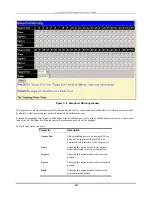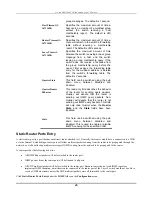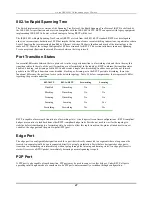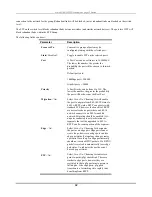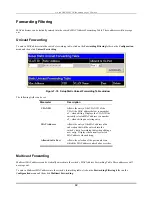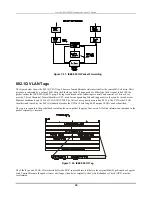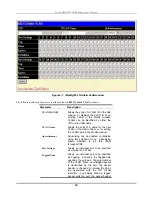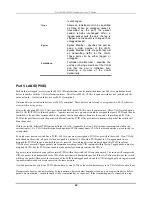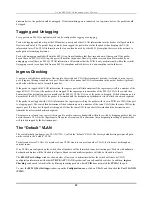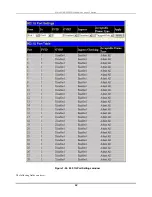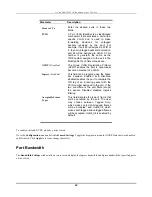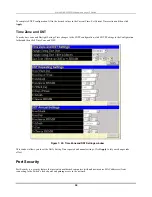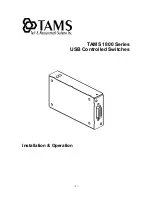
D-Link DES-3250TG Standalone Layer 2 Switch
connection to the network for the group. Redundant links will be blocked, just as redundant links are blocked on the switch
level.
The STP on the switch level blocks redundant links between switches (and similar network devices). The port level STP will
block redundant links within the STP Group.
The following fields can be set:
Parameter
Description
From
and
To
Consecutive groups of ports may be
configured starting with the selected port.
State<
Disabled
>
Toggle to enable STP on the selected ports.
Cost
A Port Cost can be set from
1
to
200000000
.
The lower the number, the greater the
probability the port will be chosen to forward
packets.
Default port cost:
100Mbps port = 200000
Gigabit ports = 20000
Priority
A Port Priority can be from
0
to
240
. The
lower the number, the greater the probability
the port will be chosen as the Root Port.
Migration
<No>
Select
Yes
or
No
. Choosing
Yes
will enable
the port to migrate from 802.1d STP status to
802.1w RSTP status. RSTP can coexist with
standard STP, however the benefits of RSTP
are not realized on a port where an 802.1d
network connects to an 802.1w enabled
network. Migration should be enabled (
Yes
)
on ports connected to network stations or
segments that will be upgraded to 802.1w
RSTP on all or some portion of the segment.
Edge
<No>
Select
Yes
or
No
. Choosing
Yes
designates
the port as an edge port. Edge ports cannot
create loops, however an edge port can lose
edge port status if a topology change creates
a potential for a loop. An edge port normally
should not receive BPDU packets. If a BPDU
packet is received it automatically loses edge
port status.
No
indicates the port does not
have edge port status.
P2P
<No>
Select
Yes
or
No
. Choosing
Yes
indicates a
point-to-point (p2p) shared link. These are
similar to edge ports, however they are
restricted in that a p2p port must operate in
full duplex. Like edge ports, p2p ports
transition to a forwarding state rapidly thus
benefiting from RSTP.
52



